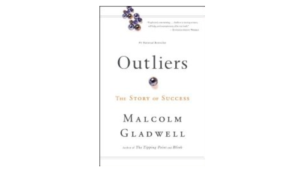In this book summary of Switch by Chip and Dan Heath, you’ll find my notes, high-level ideas, valuable lessons, and important action steps.
Switch Summary
Your brain and mind aren’t the same. Sometimes you know what to do but do the opposite—so information alone isn’t enough to consistently create a change of behavior.
Your willpower runs out over the course of the day. Keep that in mind as you go through your day.
“Change is hard because people wear themselves out. And that’s the second surprise about change: What looks like laziness is often exhaustion.”
What appears as resistance to do something is often a lack of clarity of what to exactly do. Specifics and concrete guidance is very important to change.
The way to change behavior is to direct the mind, make an emotional appeal, and shape the environment.
The rational person’s biggest fault is overanalyzing and spinning their wheels without going anywhere—it’s a double-edged sword because usually analyzing helps them make good decisions.
Focusing on small bright spots is a way to believe that change is possible. That belief is enough to produce real change over time.
Small changes can often solve a big problem. That’s why people will get in the way when they look for the big solution, because they miss the small changes.
Ambiguity is the enemy of change. If people don’t know what to do, they will fallback on their old habits. Clarity is crucial to eliminating resistance to change.
Knowing the destination is a powerful method for change because it inspires both the rational (who gets to know where you’re going) and emotional part of a person (who gets to know why).
“We’re all loophole exploiting lawyers when it comes to our own self-control.”
Negative feelings only motivate a specific action in the short-term. It’s not ideal for long-term change and growth. What’s best for long-term change is to inspire open minds, creativity, joy, and hope.
A genius way to motivate people’s emotions is to get them to feel like they’re closer to completion than they think. To inspire hope for the emotional part of the person, set up small wins that are meaningful and within immediate reach. This snowballs over time to produce big wins.
People are more likely to change if the change aligns with the identity they desire and they’re confident they can do it.
Sometimes it’s not the person, but the situation at fault. So tweak the environment and see how they respond.
Look for ways to encourage habits, this way it doesn’t take a bunch of decision-making and energy out of the individual to make behavioral changes.
Help change spread and it will soon be contagious, making it easier for everyone else to change.
“Change isn’t an event; It’s a process.” And you need to be persistent to keep the process going.
Mini Summary
Successful changes in behavior have three things in common: 1) the person gains crystal-clear direction, 2) their emotional side is committed to the change, 3) they shape the path by making the surrounding environment more supportive to their change.
Knowledge isn’t enough to make most people change. They need to desire to change and feel that it’s possible.
The way to make change last is to reinforce and encourage progress, and stay persistent.
Three Favorite Quotes
“Knowledge does not change behavior,” he said. “We have all encountered crazy shrinks and obese doctors and divorced marriage counselors.”
“When you’re at the beginning, don’t obsess about the middle, because the middle is going to look different once you get there.”
“Failing is often the best way to learn, and because of that, early failure is a kind of necessary investment.”
Action Steps For You
Your first action step is to identify what you need to change to live a more satisfying life. If you have solid self awareness, you can do this on your own. But some of you may be better off asking a close friend or family member what they think you should change.
Don’t think about the steps yet or how hard it will be, just spend a few minutes identifying what you want and need to change. Many times this is the thing you want to change least, because it will draw you the most out of your comfort zone.
First, script the important moves and have a clear destination.
For example, if you want to start a YouTube channel, some important moves would be to define your subject, decide what camera you’re going to use (built-in computer camera, phone, or fancy camera), and decide how many times you’re going to post each week. And then the destination could be to get to 20,000 subscribers after one year, or make $1,000 a month off of YouTube advertising in two years.
Then, do what you need to to feel the desire for change and get emotionally attached.
For example, knowing you want to find success on YouTube isn’t often enough. But knowing you want to grow a YouTube channel to become a full-time entrepreneur (identity), move out of your parent’s place (positive consequence), or travel the world filming (identity and consequence) is going to motivate the emotional part of you.
Next, improve the environment, build habits, and get others involved in your change.
So for building the YouTube channel, it’d be wise to designate a certain space as your spot for YouTube to improve the environment of your change. One helpful habit would be to designate certain times throughout the week that is reserved strictly for recording. And you could persuade a group of friends to start their YouTube channel and have a healthy competition to make producing new videos contagious.
And lastly, get started with small steps, one foot in front of the other.
Praise yourself when you do well and don’t harp on the failures—they’re a sign of progress. Then stick with it and learn from your experience as you go. Continue the process. For this example, keep posting new YouTube videos and trusting that you’re going to get better over time.
Order Switch
Or check out other book recommendations to become more successful.




It sounds like Switch is a good one. Your book review reminds me of a quote I read in Conversation Casanova about mindsets: “Your mindsets dictate your thoughts, your thoughts dictate your actions, and your actions dictate your results.” – Dave Perrotta
Essentially, changing your mindset gets you going to success faster than anything else.
Thanks for sharing, enjoying your book reviews each Friday 🙂
Definitely give it a read (or at least a skim) if you’re interested in it.
We’re both killing it on these books.